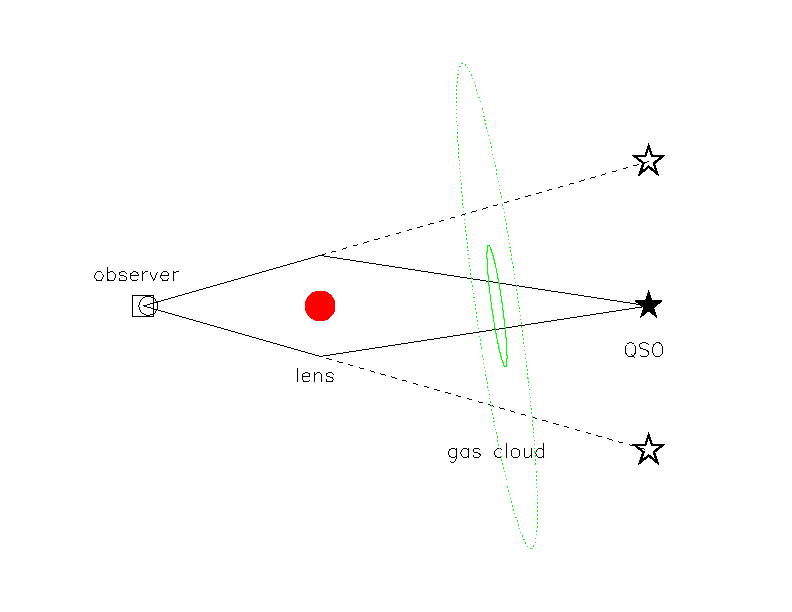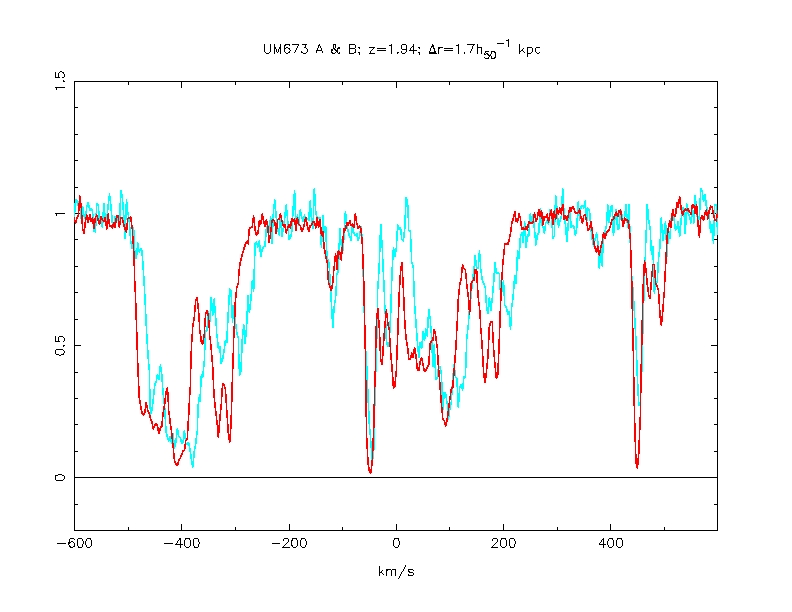
The angular magnification
in principle becomes arbitrarily high (there are some practical limits related
to the finite size of the QSO emission region)
as one approaches the QSO redshift.
In practice it has been possible to study QSO absorption systems
at transverse line of sight separations of a few tens of parsecs at redshifts
3-4. The
angular magnification here would amount to several hundred (for example,
we may see common absorption in two lensed images that appear 2 arseconds
apart, while the proper separation of the lines of sight to the naked
eye (i.e., unaided by the lensing effect) may be only a few milliarcseconds
and would be impossible to resolve from the ground.

The following figure shows two spectra (red and turqoise) in adjacent lines of sight to a
lensed QSO, UM673. The absorption is caused by the CIV (1548, 1551) doublet
at redshift 1.94. The pattern to the left of the origin of the x-axis
comes from the 1458 A transition. It repeats itself to the right of the origin
in the 1551 A
line (though with lower optical depth because of the lower oscillator strength). The transverse separation between the lines of sight at that
redshift is about 1.7 kpc for a Hubble constant of 50 km/s/Mpc. Note
the strong shift between the absorption groups near -400 km/s, in
contrast to the nearly identicial appearance of the sharp absorption
line near -50 km/s in both images.
The spectra were taken with the Keck I telescope and the HIRES
spectrograph on Mauna Kea.
